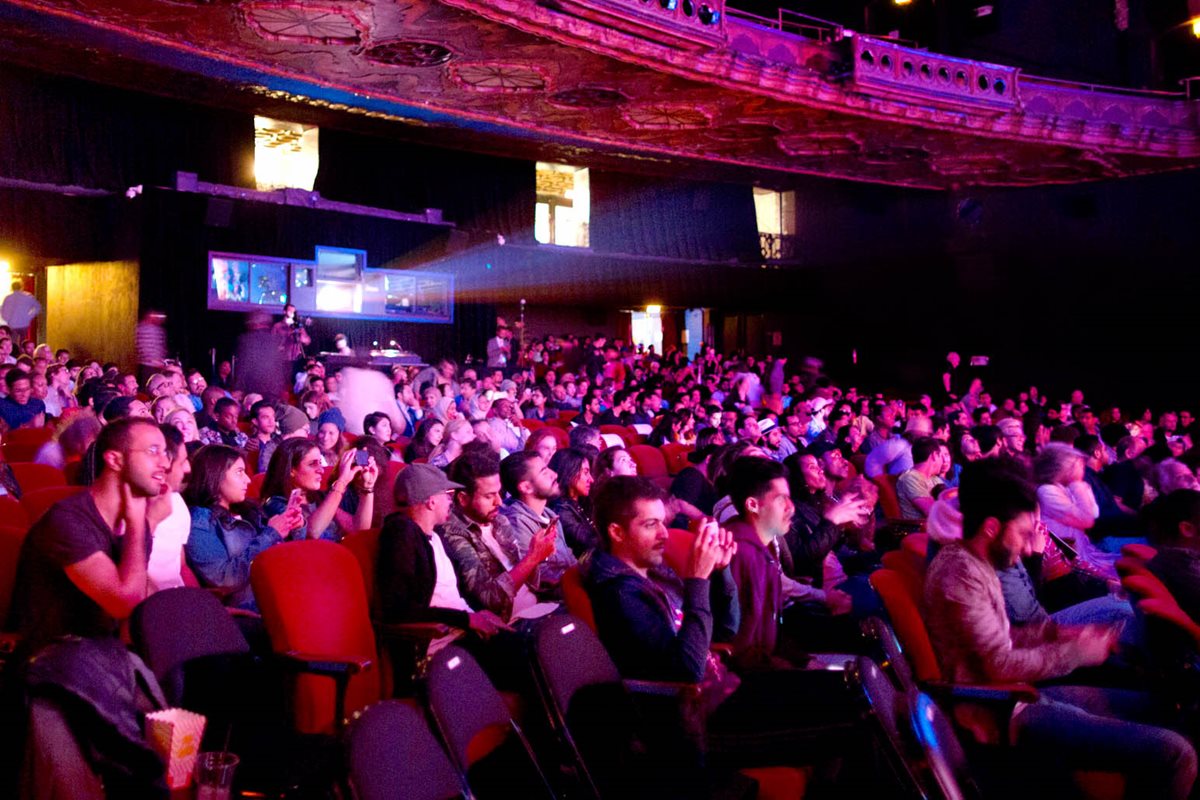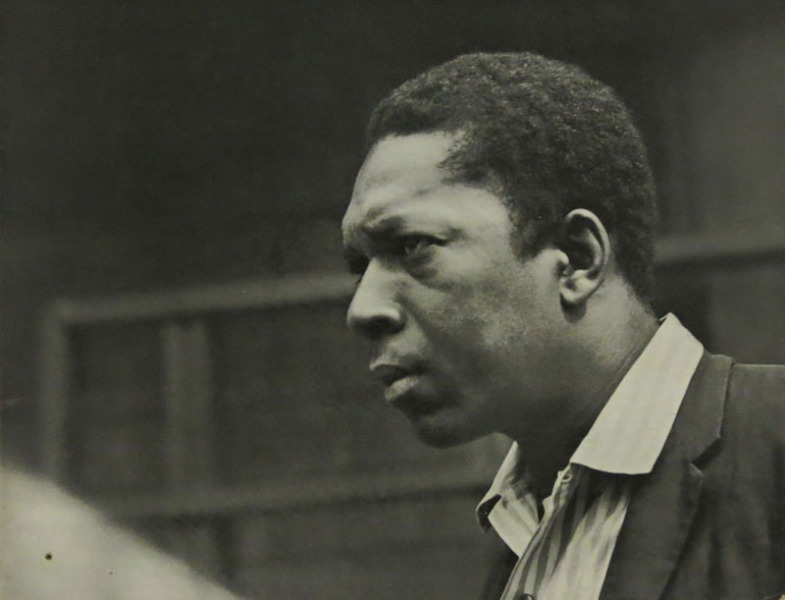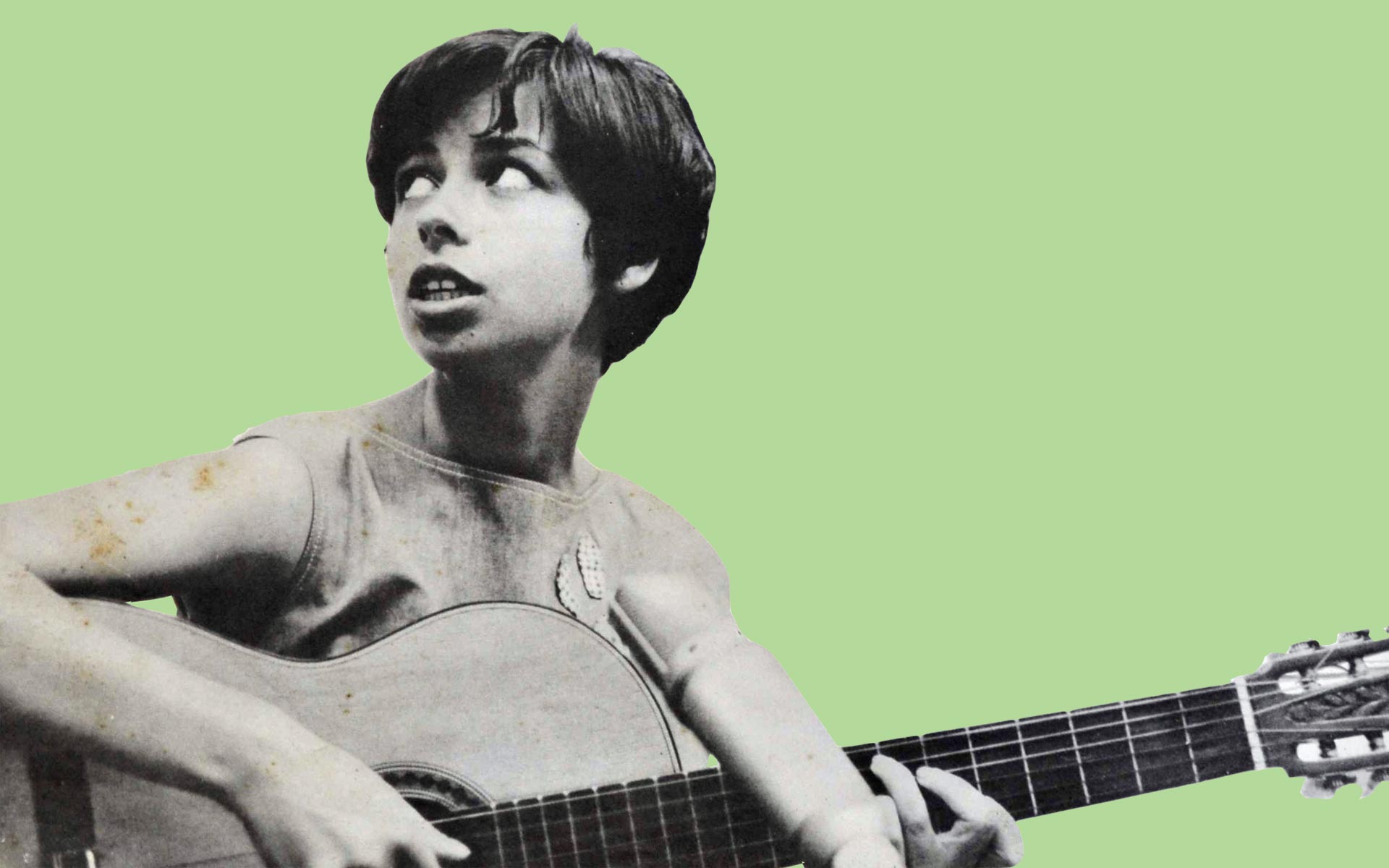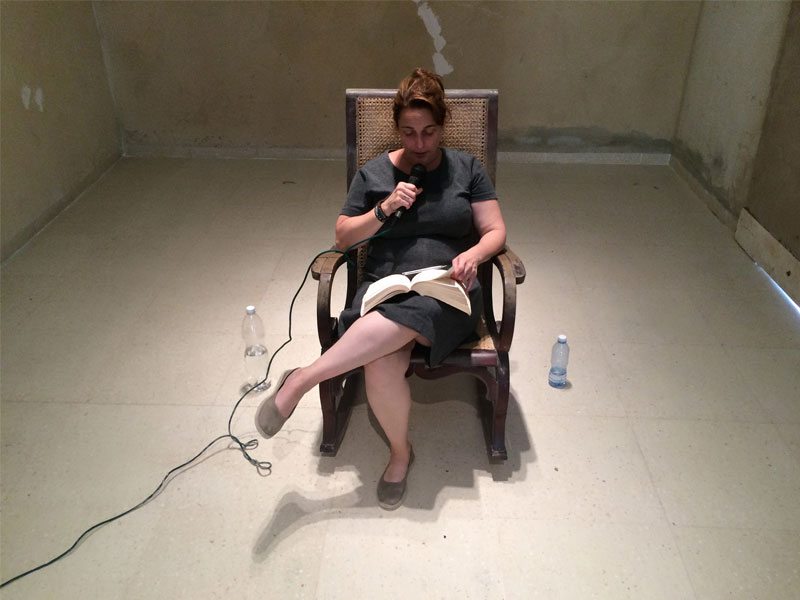(Published in the March-April 2017 edition of AramcoWorld magazine: http://www.aramcoworld.com/pt-BR/Articles/March-2017/Saudi-Film-Days)
As sunset gilded Los Angeles on November 3, actor Giancarlo Esposito, most recently of Breaking Bad fame, joined a small flock of fellow Hollywood celebrities at Paramount Studios to walk a red carpet in front of an unprecedented backdrop: the logo for Saudi Film Days, the two-day US premiere of seven short movies by seven young directors, all from Saudi Arabia. Esposito, a veteran also of three Spike Lee films who knows a thing or two about new voices in film, was as excited to meet the directors that evening as they were to meet him. “I’m here to support,” he assured them. “I have a feeling I’m going to be blown away by what I see.”
Two hours later, sustained, heartfelt applause from some 150 people inside the plush cave of Paramount’s largest theater seemed to fulfill his prediction.
“Those were the first Saudi Arabian films I have seen,” said actress, writer and producer Karola Raimond. “I was moved. I laughed. I shed some tears. All the films had depth. Honesty.”
Variously dramas, comedies and documentaries, each of the films was set and produced in the Kingdom, and each addresses a subject both culturally specific and universal. Director Ali Alsumayin’s I Can’t Kiss Myself is like a stage drama, a well-acted dialog in which a young man fixated on social media fame is challenged to rethink the consequences of his obsession. Meshal Aljaser’s over-the-top, surreal Is Sumyati Going to Hell? shows a Saudi family treating its Filipina maid, Sumyati, with racist contempt—except for the five-year-old daughter, who loves Sumyati and asks difficult questions. The Bliss of Being No One, produced by Bader Al Homoud, uses long, dialog-oriented shots to portray a grieving man’s chance encounter with an elderly Saudi hitchhiker (played memorably by Ibrahim Al-Hasawi) who turns out to excel at storytelling and deeply candid conversation—or so it seems.
With four additional shorts, Saudi Film Days worked along the lines of Sundance, Cannes and other international film festivals to give the filmmakers a chance to make industry connections and talk publicly about their movies in front of audiences that, in turn, could tell influential colleagues and friends. It was, in Hollywood terms, about buzz.
Arriving in Los Angeles, the filmmakers and actors were supported by Saudi Aramco’s King Abdulaziz Center for World Culture, and for many of them, this was their first visit to a major film-production city. Stepping inside Paramount Studios, where generations of acclaimed directors have worked their magic, gave them an up-close look at the tools of success.
“This is a great opportunity for us,” Al Homoud said. “Our main goals are to make connections and to communicate our films. They are pioneers of cinema here. We need to connect with them. We need to learn from them.”
Ali Alkalthami, director of the comedy Wasati, loves the films of Martin Scorsese, who has made five movies at Paramount; Alsumayin admires Woody Allen; Aljaser goes back to Buster Keaton for his inspiration as well to Seth MacFarlane’s television series Family Guy. All aspire to a day when the world knows their works as well. (To date, the best-known international Saudi film may be Haifaa al-Mansour’s 2012 Academy Award-nominated drama Wadjda, about a girl, her family and a bicycle.)
Despite their youth, most of the Saudi filmmakers have been riding the digital video revolution for several years. Worldwide, their country has one of the highest percentages of Internet users—it leads the world in Twitter use and YouTube views per capita—and half its population is under the age of 25.
“Social media helped us a lot as filmmakers because it gave us an opportunity to connect, to find a crew, the actors, and it inspires us to make even better stories,” said Al Homoud.
In addition, the Kingdom has film clubs that screen films in private settings. All this makes for a wide audience for movies despite the absence of commercial theaters. As a co-founder also of the Riyadh-based entertainment company Telfaz11, Alkalthami and his collective of other young directors, technicians and actors produce more than 100 videos a year for an online subscriber base that numbers 12 million. Telfaz11’s popularity is but one example of the Kingdom’s “home-grown” film industry that has to date remained largely invisible to the rest of the world.
“We believe the talent they have is really something that’s worth sharing with the rest of the globe, and we can’t be in a better place than Hollywood,” said Tareq Al Ghamdi, director of the King Abdulaziz Center for World Culture. “It provides this cultural engagement, through dialog, for people to see what our young Saudis are talking about. And for them, it provides what the rest of the globe is thinking about what we’re doing. It will provide encouragement and support not only to them but to people back home to embrace filmmaking as a career, be it directing or producing or acting.”
The following night, Saudi Film Days screened again a few miles away in downtown Los Angeles, at the historic, baroque-revival Theatre at Ace Hotel. This drew the urban, cosmopolitan crowd, and the lobby beforehand was a chatter of English and Arabic, as well as Spanish and Chinese.
At that evening’s red carpet, as television reporters filmed and interviewed, the directors and actors seemed relaxed and even playful, buoyed by the affirmations of press, peers, celebrities and industry insiders.
“The creative elements of these films were really fantastic,” said Esposito after the Paramount screening. “Each one had its own very specific beauty to it. There were really great messages in these films.” He was particularly taken, he said, with Alkathami’s Wasati, which uses humor to dramatize a serious event decades ago in Riyadh when conservative audience members shut down a theater production in mid-performance; Alkalthami added a fictional character who lends the film both charm and gravitas. “I found it really creative,” Esposito said. “It also made it funny and poignant, and made it more personal.”
Academy Award-winning effects supervisor Craig Barron walked out effusive, too. “I thought they were extremely well-acted and well-designed,” he said. “They make entertaining films that a Westerner can appreciate, and it’s good storytelling.”
“Local but global,” Alkalthami said of his approach to his films. “We’ve been working so much to get our projects out there on the Internet, and now it’s time to make a bit of an adjustment—to try cinema and do cinema. It’s a new platform, a new experience and a chance to get our films seen around the world.”
Raimond echoed him from her point of view. “Watching those films shows how much more we have in common. That’s what art is for. So it’s very important those films are shown in Europe and America.








